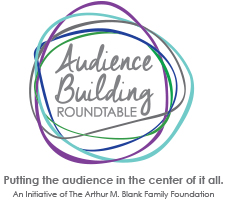By Stephen Brown, President, Cookerly PR
As The Arthur M. Blank Family Foundation reconvened its Audience Building Roundtable for a “COVID-19 Pivot,” I had the opportunity to talk with more than 50 arts and culture organizations in the Roundtable about ways they can stay top of mind with their audiences during a 2020 which has thrown curveballs to nearly every American institution.
The week ending June 12, 2020, the twelfth week of national arts and culture data expert Colleen Dilenschneider’s research about “intent to visit” has now intersected with societal unrest in the wake of tragedies and protests related to systemic racial injustices, capturing the attention of Americans and the world at large, with people indicating that they intend to return to their usual attendance behaviors within about three months, but with some redistribution of demand. For the full study, visit https://www.colleendilen.com
Months without entertainment options outside of the home has stimulated creative activity across professionals and hobbyists alike, according to Ellen McMahon, associate dean for research at the University of Arizona College of Fine Arts. "A tremendous amount of creative work will emerge from this disruption, because art originates in personal, often traumatic, experience.”
Now we are faced with a bifurcation of challenges: How do we get back to business post-“shelter in place” with untenable restrictions? Furthermore, how do we additionally address long-gestating societal issues which have been thrust into the forefront?
FIVE THINGS YOU CAN DO RIGHT NOW
The silver lining is that no industry is better poised to stir hearts and minds than a group of storytellers, curators, innovators and provocateurs. Remember what makes your institution iconic, and double-down on this notion with your key messages and spokespeople. Here are five takeaways from our marketing sessions to ensure you are getting maximum traction for your organization’s hard work during this time:
Pivot your programming. Be willing to re-invigorate and re-invent new creative forms of programming. When your show isn’t on, your brand, marketing and virtual offerings become your show. Many of you are adding online elements such as virtual events, cyber exhibitions, pay per view videos and distance learning that is proving so successful, you’ll likely keep these components in your programming offerings post-pandemic. Others of you are establishing creative venues even outdoors, modifying previously scheduled live events or dreaming up new ways to inspire and connect. As examples, kudos to Found Stages for developing an all-texting play and Actor’s Express for bringing a virtual reading of the timely Woke to life online.
Give your virtual lobby a re-do. Ensure your website is functioning as a welcoming lobby and optimally showcasing your offerings. Focus on fresh content and update your site’s header (not just your homepage) with any ways you’ve adapted while closed and share ways you are open for business. Alliance Theatre has done this well, with social justice resources and virtual resources boldly proclaimed on its home page. High Museum of Art showcases ways audiences can interact right on its page, on its social channels or even on its blog at Medium.com, plus it introduced virtual ways audience members can curate their own gallery on mobile phones.
I want my IGTV! Make sure you are maximizing the “Stories” function of Facebook and Instagram. This is the new frontier of a next generation of audience. Adapting to the vertical photo, video-heavy and poll-laden format will help stoke interest in your institution by new folks. Additionally consider co-creation with guest stars or featured artists to post in your space and draw their audiences into yours.
Bravely boost…If you have advertising budget, experiment with social boosts on Facebook and Instagram. (Remember that for as little as $25-$30 you get a remarkable return on social media investment!) It’s the fastest way to reach a wider or more precise audience with specific calls to action, and it’s measurable. Fewer than 10% of your followers see any individual post you make on Facebook, for instance, so amplifying very important posts will help you reach all your current followers and new ones. If you don’t already have one, this may also be an excellent opportunity to consider using a Google Ad Grant, a program that allocates $10,000 each month in credit-based advertising grants to qualifying 501(c)(3) organizations to expand the reach of your website and mission. (https://www.google.com/grants/how-to-apply/)
Rally your third-party endorsers. Find your go-to reporters, and not just on the arts and nonprofit beat. Remember to look for journalists at print, broadcast and online sources who are covering your geography or who cover trends and topics matching what you’re doing right now. Family reporters, political reporters, real estate reporters and human interest reporters are all fair game. Invite these journalists to take part in your new offerings or get a behind-the-scenes of what you’re doing differently. Then once you’ve landed the story or segment, re-market it to your audiences.
A consistent, unified message is more important than ever, and integrated campaigns prove that the whole is greater than the sum of its parts. Congratulations to many of you who are banding together to start Art Beats Atlanta, Field Trip Fridays and the Atlanta Artist Solidarity March. Day by day, you are making a difference and keeping the power of the arts top of mind in our lives.
About the author: cookerly.com/team/stephen-brown/
